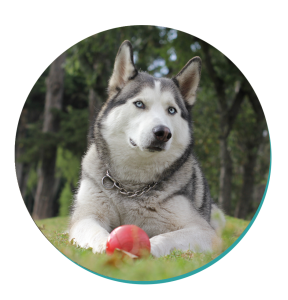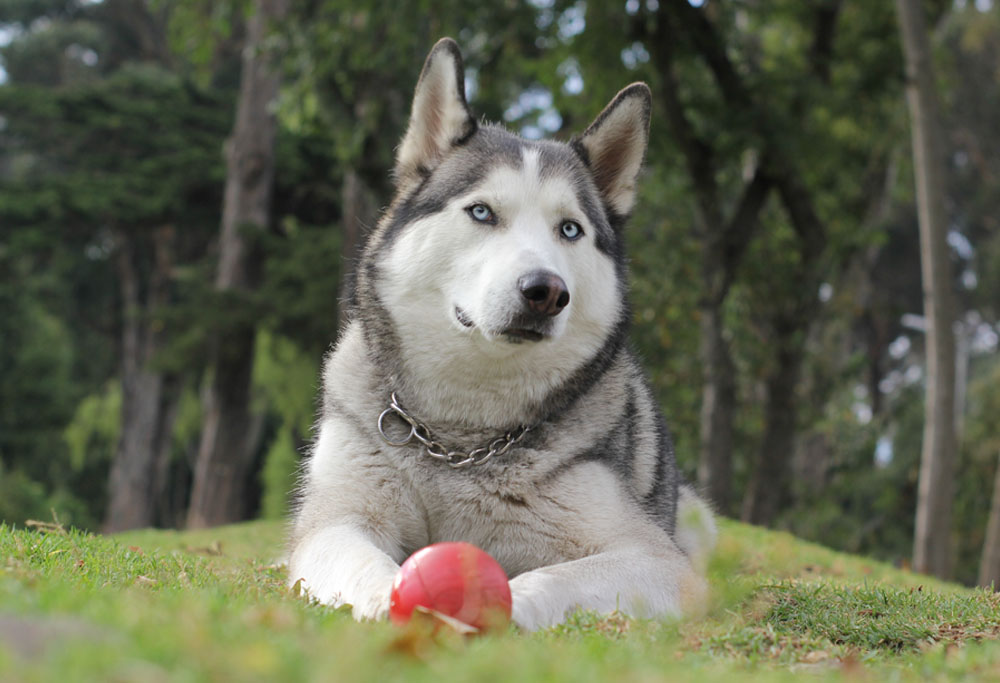Meet the Siberian Husky in this Dog Breed Corner! We won’t teach you all the dog sled commands, but you’ll learn all about their health and personality!
 Quick Facts ✔
Quick Facts ✔
Height – 50 – 60cm
Weight – 16 – 27kg
Lifespan – 12 – 15 years
Country of origin – Siberia
Breed type – Working Dog
- Active, vigilant Owners
- Owners who want an independent, intelligent dog
- Large families, or households with other pets
Siberian Husky Breed History ♜
While these furry doggos may look like wolves, they’re pretty far removed, genetically speaking. In fact, the Siberian Husky has a lineage that goes back at least 4,000 years to a hunting clan in Siberia called the Chukchi. These Huskies had a range of jobs, from hunting, to transportation, to cuddling with clan members during cold winter nights.
It wasn’t until the early 1900s that the Siberian Husky became a recognised breed outside of Siberia. This began when sled-runners took a team of these dogs to Alaska to compete in a dog-sledding competition. When they won third place, these loveable pups also won instant fame for their breed.
Personality, Traits, & Trainability ★
If you’ve ever met a Siberian Husky in person, you probably gathered that they’re a wonderful and sometimes tricky breed. They love humans, they love other dogs, and above all else, they love the outdoors.
Because of their free-spirited nature, it’s important to keep an eye on your Siberian Husky. Even with proper training and exercise, they’re likely to wander. Give these pups a bit of space, and they will happily roam, whether up to follow them or not. For this reason, you’ll usually see Siberian Huskies on leash or in an enclosed space.
Siberian Huskies are also very intelligent. They’ve been known to open doors and windows, just to pop out for a bit of fresh air. Their intellect, added to their independence, can make Huskies a bit of a challenge when it comes to training.
However, the good thing is, Huskies are generally an easy-going breed without aggression issues or territorial urges. As such, they get along with everyone. They just have what Owners will jokingly call “selective hearing.”
Siberian Husky Health, Grooming, and Living Conditions ⌂
At this point, you’ve probably guessed that this pooch needs space to run and sniff and explore. If you live in a city or a small apartment, be ready to take multiple trips to the dog park per day along with plenty of around-the-block walking breaks. Otherwise, you’ll have a destructive pup on your hands.
If you live in a rural area more suited to the Siberian Husky lifestyle, it’s still important to supervise them. They will often feel a drive to chase wildlife and see what’s out there on the horizon.
Huskies have a higher risk of cataracts and other eye problems, such as progressive retinal atrophy and corneal dystrophy. As a result, your vet should be on the lookout for these hereditary eye problems early on.
Like most large breed dogs, the Siberian Husky is also at risk of hip dysplasia.
Siberian Huskies have the perfect coat for below-freezing conditions, which means lots of fur. Their double coat needs to be brushed daily, and they’ll also shed the entire undercoat twice a year.
Huskies shed constantly (and in black and white), but the good thing is they are naturally cleaner and less oily than other pups. On the plus side, they don’t need regular baths.
Fun Fact about the Siberian Husky ♥
Perhaps the world’s most famous Siberian Husky was Balto, who saved a snowed-in town in Alaska from diphtheria in 1925. Although he wasn’t trained as a guide dog, Balto rose to the occasion and led a team through a blizzard to deliver crucial medicine.
He’s the star of his own Disney movie and has a statue in his honour in New York’s Central Park.
Are you hunting for a Pet Sitter who can keep up with your Siberian Husky? From Canberra to Perth, from Hobart to Brisbane, Mad Paws is ready for your pooch. from Check out all the Mad Paws Pet Sitters nearby!

